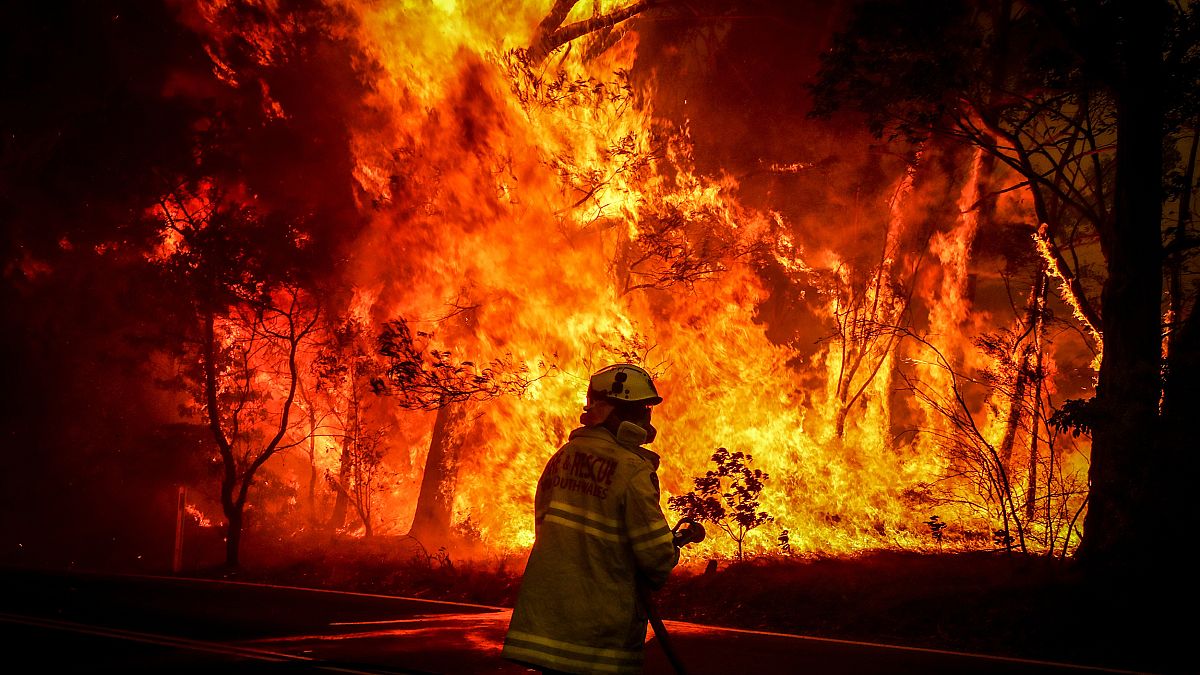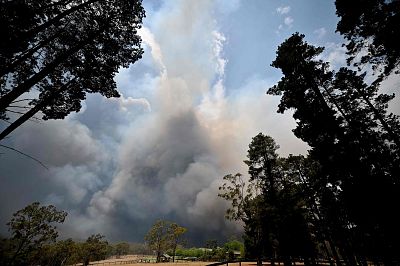"It's a very difficult and dangerous set of circumstances," said Rural Fire Service Commissioner Shane Fitzsimmons.
As around 100 wildfires continued to rage across New South Wales (NSW), a seven-day state of emergency was declared in Australia's most populous state.
U.S. and Canadian backup teams, along with personnel from the Australian Defence Force, have been drafted in to support around 2,000 firefighters to battle the blazes, half of which remain uncontrolled, officials told the Associated Press.
Three firefighters, two of whom had to be airlifted to hospital with major burns, have been injured, NSW Rural Fire Service Commissioner Shane Fitzsimmons told a news conference in Sydney on Thursday.
"It's a very difficult and dangerous set of circumstances," he said.
Blazes across New South Wales and Queensland have scorched almost 7 million acres over the past few months, after the annual Australian fire season, which peaks during the Southern Hemisphere summer, started early after an unusually warm and dry winter, according to the Associated Press.
Six people have since died and more than 800 homes have been destroyed as the fires have run wild.
The flames have been fanned by oppressive conditions and extremely high temperatures. The country experienced its hottest day on record Wednesday, when the average temperature across the country hit 105 degrees.
Temperatures are expected to rise, according to Australia's Bureau of Meteorology, with Friday forecast to be the hottest day of the week.
New South Wales Premier Gladys Berejiklian told a news conference that authorities were concerned with the unpredictable conditions.
"With extreme wind conditions, extreme hot temperatures, we have a good idea, a good sense, of where the most concerning areas are, but again when you've got those turbulent conditions, embers and spot fires can occur very unpredictably," she said after meeting with NSW fire chiefs.
She also tweeted that people should plan and prepare for journeys made over the Christmas period.
As smoke continues to billow up from the flames, Sydney's air pollution levels on Thursday ranged from poor to hazardous, according to the NSW government.
During the past month, smoke has often blanketed Australia's most populous city and made its iconic skyline barely visible.Hospitals have recorded a 10 percent increase in visits from patients with respiratory conditions during the past week, according to the AP.
With wildfires are also burning in the states of Queensland, South Australia and Western Australia, the unprecedented conditions have revived a debate on whether the government has taken strong enough political measures relating to climate change in the country which is the world's largest exporter of coal and liquefied natural gas.
Protesters camped outside conservative Prime Minister Scott Morrison's residence in Sydney demanding urgent action on climate change.
Morrison, who is currently on holiday, conceded last week that "climate change along with many other factors" contributed to the wildfires.

